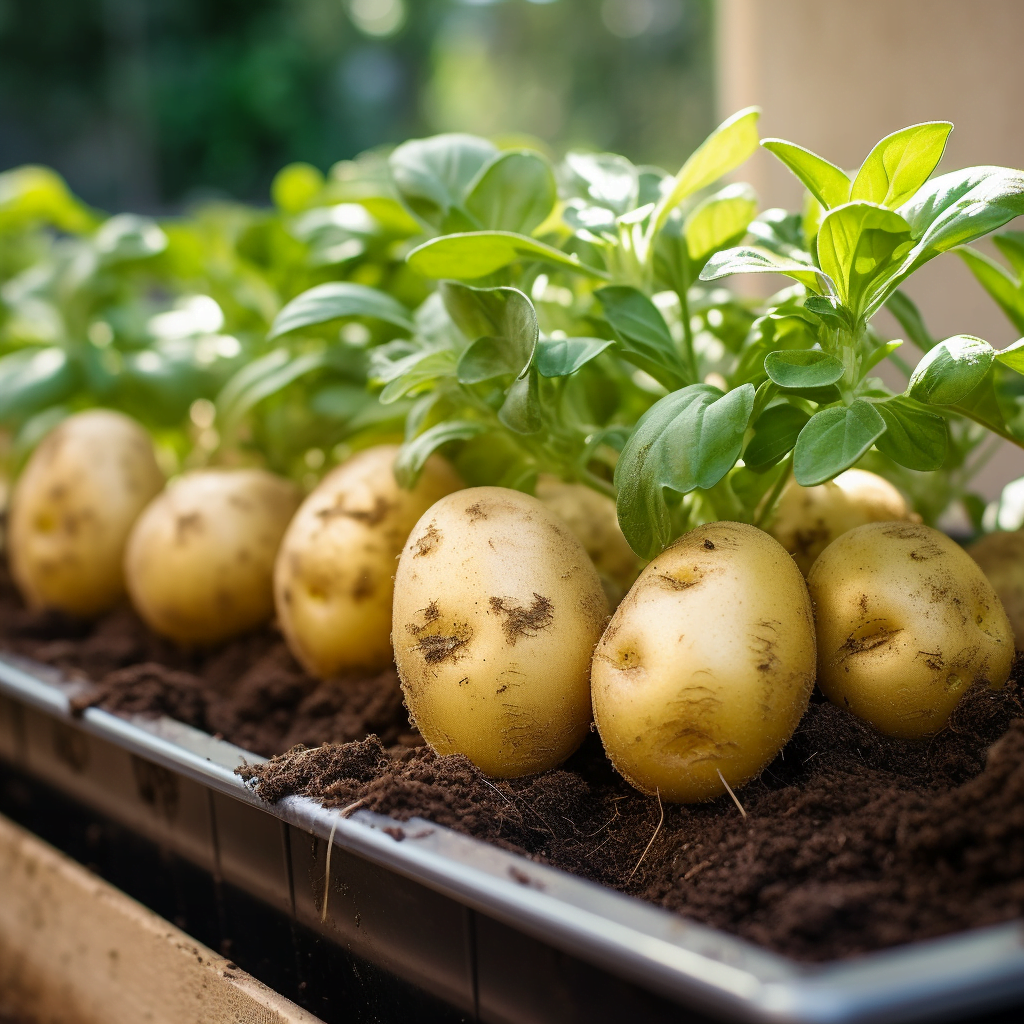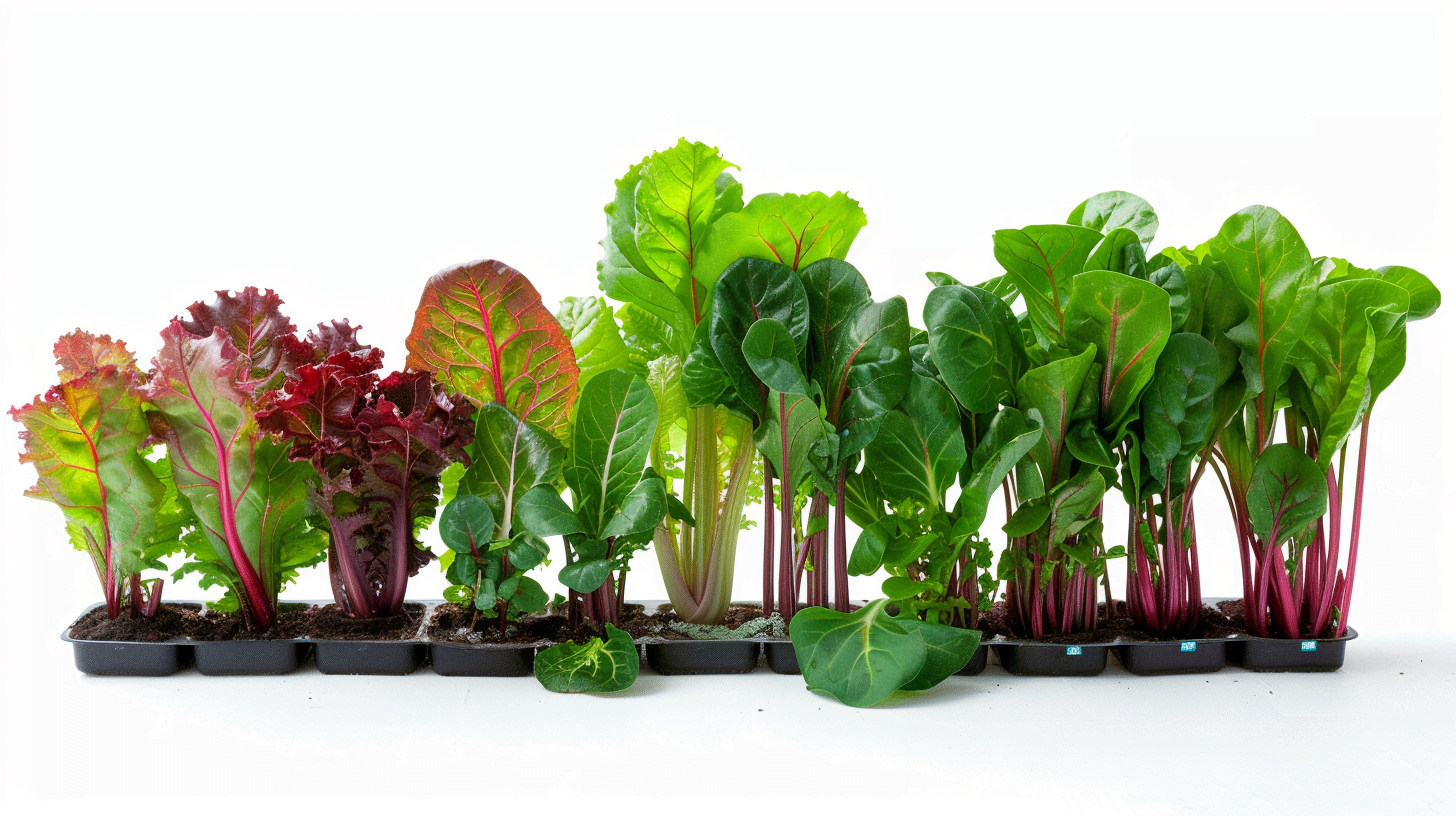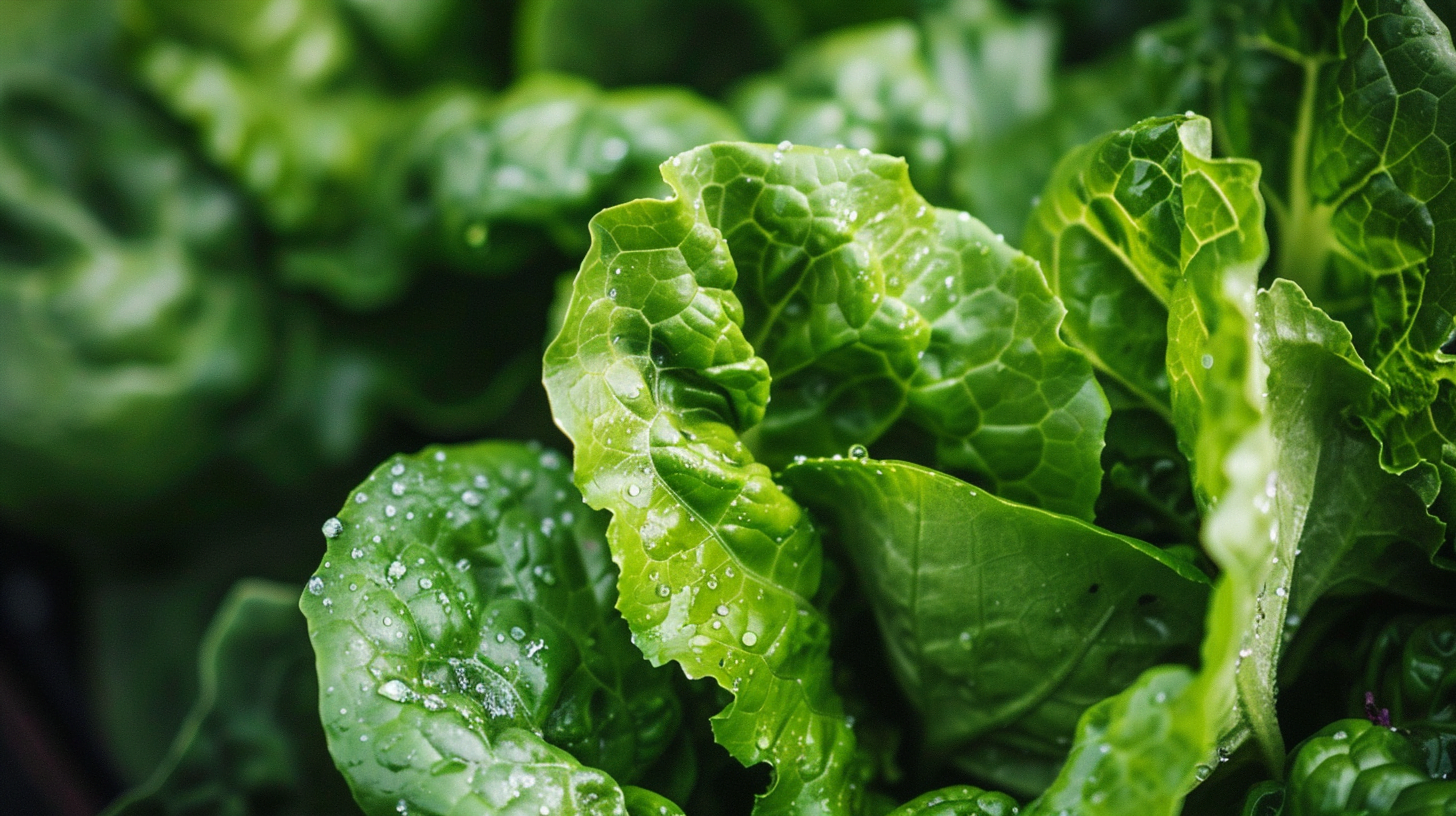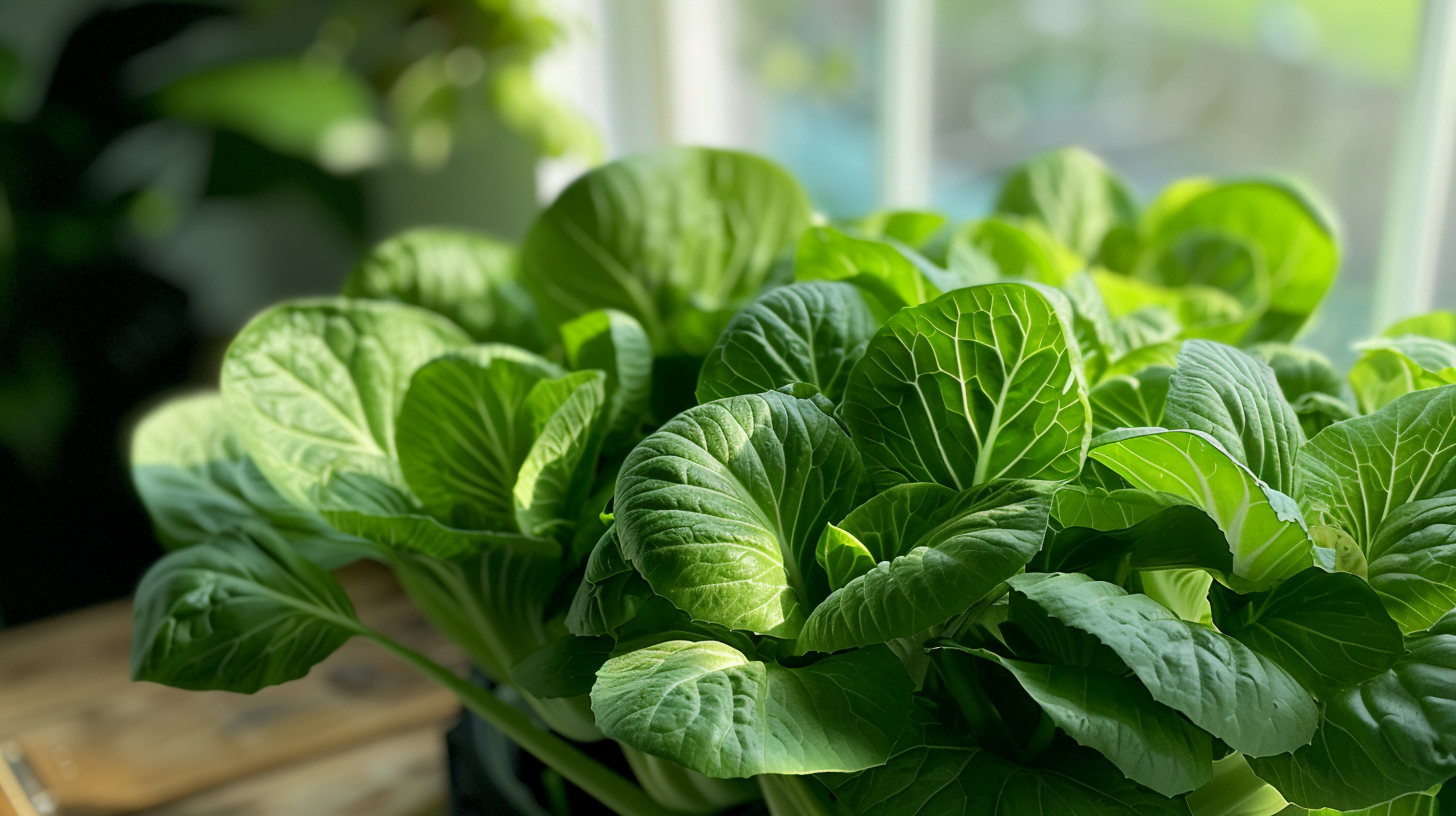Table of Contents
What is Hydroponic Potato Growing?
Hydroponic potato growing involves cultivating potatoes without soil, by suspending the plants in a nutrient-rich water solution. The roots are supported using an inert medium like perlite, clay pebbles, or coconut coir. In this article How to Grow Potatoes Hydroponically you will find out the benefits and how to grow potatoes in bulk.
Hydroponics allows for greater control over the potato’s growing environment. The water solution contains all the nutrients the plant needs, while factors like lighting, temperature, and pH can be optimized to encourage faster, higher-yielding growth.
Growing potatoes hydroponically has several advantages over traditional in-ground cultivation:
- Higher yields – hydroponic systems can produce up to 2-3 times more potatoes per square foot than soil farming.
- Faster growth – hydroponic potatoes reach maturity 30-50% faster.
- Less water usage – hydroponics uses 90% less water since there’s no runoff or evaporation.
- No weeding or pesticides – the controlled environment prevents weeds and pests.
- Grow year-round – potatoes can be grown continuously in an indoor hydroponic setup.
Overall, hydroponic potato production offers a highly efficient way to maximize yields in a restricted space. Both hobby growers and commercial producers can benefit from this soilless method.
Benefits of Hydroponic Potato Growth
There are several major benefits to growing potatoes hydroponically rather than in the ground:
Higher Yields
Hydroponic systems allow you to plant potatoes more densely, and provide the ideal growing conditions to support that density. On average, hydroponic potato yields are 2-3 times higher per square foot compared to soil. With the right setup, experienced growers can harvest over 20 pounds of potatoes per plant.
Faster Growth
Hydroponically grown potatoes reach maturity 30-50% faster than soil-grown. With precisely controlled lighting and nutrients being delivered directly to the roots, plants grow rapidly. You can harvest full-size tubers in as little as 70-90 days from planting.
Less Water Usage
Since the nutrient solution is recirculated in a closed-loop system, hydroponics uses up to 90% less water than conventional soil farming. There is no water lost through runoff or evaporation. This makes hydro an extremely water-efficient method of potato production.
No Weeding or Pesticides
Because the potato plants are grown in a controlled indoor or greenhouse setting, there are no weed or pest problems to deal with. No need for manually weeding or applying pesticides.
Ability to Grow Year-Round
With hydroponics, potatoes can be grown year-round since the environment is optimized for plant growth. You’re not restricted to seasonal outdoor planting. As long as lighting and temperature can be controlled, potatoes can be continuously produced.
Choosing a Potato Variety for Hydroponics
When selecting a potato variety for hydroponics, look for types that produce high yields and thrive under indoor growing conditions, such as:
- Red Potatoes – Varieties like Norland, Chieftain, and Red La Soda are widely used for hydroponic production. They produce good yields and have shorter growth cycles.
- White Potatoes – Yukon Gold, Kennebec, and Superior are popular white varieties that tend to yield well hydroponically.
- Yellow Potatoes – Yellow Finn and Yukon Golds are common choices. Their yellow flesh stores well after harvest.
Avoid low-yielding or long season (120+ days) varieties like Russets. Look for shorter cycle, high yield varieties ideally suited to hydroponic systems.
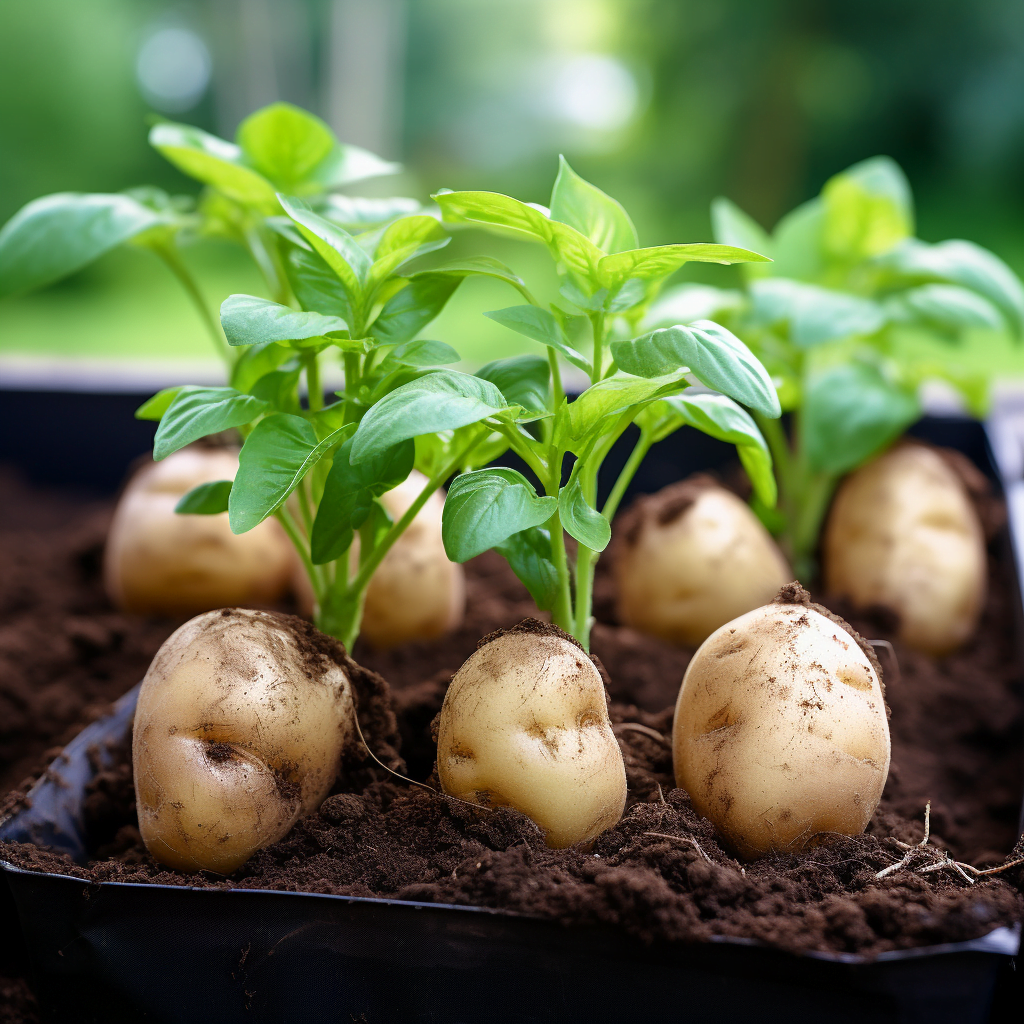
Hydroponic System Options
There are several types of hydroponic systems that can be used to grow potatoes:
Deep Water Culture (DWC)
Plants are suspended in buckets or tanks with the roots submerged in an oxygenated nutrient solution. A bubbler provides oxygen to prevent root rot. Simple, inexpensive system but requires frequent solution monitoring.
Nutrient Film Technique (NFT)
A thin film of nutrient solution runs through enclosed channels, with plants supported in grow holes. Requires precise control over flow rates and pH. High oxygen levels promote tuber growth.
Ebb & Flow (Flood and Drain)
Plants sit in a grow tray filled with clay pebbles. The nutrient solution periodically floods the tray then drains out. Allows plant roots to get oxygen.
Wick System
Plants are situated above a reservoir, with wicks drawing the nutrient solution up to the roots. Passive system requires no pumps or electricity.
Aeroponics
Plant roots are misted with an air-infused nutrient spray inside a light-tight enclosure. Maximizes oxygen but involves complex setups.
For beginners, DWC and ebb/flow systems are easiest to implement. NFT and aeroponics require more precision in operation.
Building Your Hydroponic Potato System
Follow this step-by-step guide to build your own home hydroponic potato system:
Select a System Type
Choose an appropriate system like DWC, NFT, or ebb/flow based on your skill level, budget, and available space. Scale it to the number of plants you want to accommodate.
Set Up Reservoir
Obtain a reservoir bin, tank, or bucket large enough to hold the nutrient solution. Add a water pump and air stones if needed.
Install Growing Containers
Cut holes in lids of buckets or nets pots to support the plants. Use a growing medium like perlite, gravel or clay pebbles.
Assemble Lighting
Suspend grow lights above the system. LED grow lights provide the full light spectrum potatoes need. Provide 16-18 hours of light per day.
Install Irrigation Lines
Connect irrigation lines to pump water and nutrient solution to the plants. Drip lines, sprayers or central distribution lines can be used.
Add Monitoring Tools
Use pH and EC meters to track solution chemistry. A thermometer helps monitor water temperature. Install timers to control lighting schedules.
Test the System
Run the system with plain pH-adjusted water first. Confirm all pumps, lines and drains work before adding plants.
This basic process can be scaled up to larger systems capable of supporting dozens of potato plants.
Planting and Caring for Hydroponic Potatoes
Follow these tips for planting and ongoing care of hydroponic potatoes:
- Begin with certified disease-free seed potatoes. Cut tubers into smaller pieces containing at least 1-2 eyes per section.
- Place cut seed pieces in grow medium, with eyes facing up and spaced 8-12 inches apart. Bury just the bottom section while leaving the top exposed.
- Maintain nutrient solution pH between 5.5 to 6.5 and electrical conductivity around 2.0 mS/cm. Use hydroponic formulas tailored for vegetables.
- Ensure air pumps and stones continually oxygenate the nutrient solution. Change reservoirs every 1-2 weeks to avoid salt buildup.
- As plant stems reach 8-12 inches, heap additional medium around the lower stem to encourage more tubers.
- Provide 16-18 hours of bright lighting daily from LED grow lights. Maintain ambient temperatures around 65-75°F.
- Monitor plants for signs of pests, diseases, nutrient deficiencies. Take corrective actions promptly.
With attentive care and maintenance, hydroponic potato plants will thrive and produce a bountiful harvest.
Harvesting Hydroponic Potatoes
- Potatoes take 70-120 days to reach full size, depending on the variety.
- Test harvest a few plants first to gauge tuber size. Harvest when tubers are 2-3 inches across.
- Shut off irrigation system 2 weeks before harvest. This toughens skins for longer storage ability.
- Gently remove plants from the system and brush off growing medium to access potatoes.
- Cure freshly harvested potatoes in a dark, well ventilated area for 1-2 weeks before long term storage.
- Store cured potatoes in a cool (55°F), humid location. Avoid exposure to light which can cause greening.
- Expected yields are around 5-8 pounds per plant. Experienced hydro growers can achieve yields over 20 pounds per plant.
Proper post-harvest curing and storage will help maximize potato shelf life and quality.
Conclusion
Growing potatoes hydroponically allows you to produce high yields of quality tubers while overcoming many of the challenges of traditional soil cultivation. With the right system, potato variety, and care regimen, hydroponic potato production can be extremely successful even for novice growers.
The key advantages of hydroponics like faster growth, higher density planting, and protected indoor environments enable you to harvest prolific crops of potatoes. Careful monitoring and maintenance of lighting, nutrients, and system components creates optimal conditions for excellent growth.
While initially setting up a hydroponic potato system requires an investment of time and resources, the reward is high-quality potatoes that can be grown year-round independent of outdoor conditions. Both small-scale home growers and larger commercial operators can benefit from this soilless growing method.
With this comprehensive guide, you now have all the information needed to start cultivating potatoes hydroponically. We covered selecting varieties, building different types of systems, care and maintenance, troubleshooting, and harvesting a bountiful potato crop. Growing potatoes without soil is an efficient, productive way to boost your yields.
If you found this guide helpful, be sure to check out our other hydroponic gardening resources to take your skills to the next level. Happy growing!
